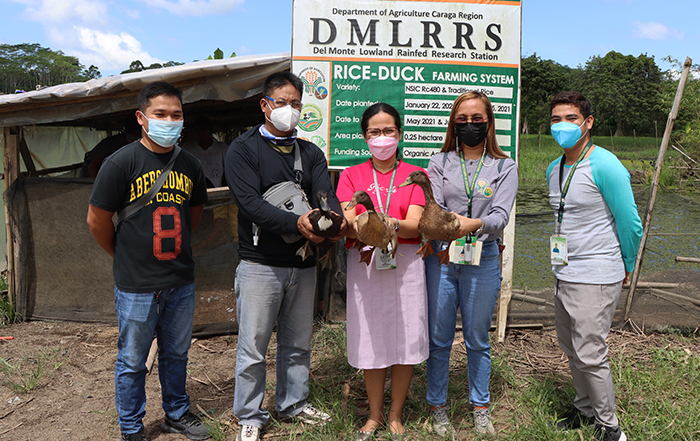 |
Integrated rice-duck farming is a good ecological agricultural practice that the Local Government Unit (LGU) of Sibagat, Agusan del Sur wanted to demonstrate to the farming community in their town.
With this, the Department of Agriculture (DA)- Caraga Organic Agriculture Program and Del Monte Lowland Rainfed Research Station (DMLRRS) in partnership with the DA-Bureau of Animal Industry turned over 100 heads of Itik Pinas to LGU-Sibagat on Feb 16.
Aimed to showcase, transfer, and disseminate technologies on a diversified farming system, the DA’s Organic Agriculture Program ties up with LGU Sibagat as they take steps to improve the quality of life and the resources of farmers by focusing on holistic and sustainable farming techniques.
According to Sibagat Organic Agriculture Program Focal Person Cherry S. Estacion, a rice-duck technology demonstration will be established in the LGU’s Learning Site for Agriculture to accelerate the adoption of technology and innovations.
“The municipality of Sibagat discouraged farming communities to rely on the use of molluscicide and other synthetic pesticides and fertilizers in eliminating golden apple snail and increasing rice yield. Time has proven that the said practices are expensive, increase health hazards, and are environmentally destructive. With the establishment of the demo farm, smart investment with regard to rice farming can be adopted,” said Estacion.
The Municipal Agriculture Office of Sibagat is committed to becoming a multiplier farm to increase the inventory of ducks within the municipality and encourage more farmers to engage in the technology.
DMLRRS Chief Catherine Juyno said that research studies showed that rice-duck farming contributes to food and economic security in a community by reducing the use of pesticides, increasing yield, and generating additional income for farmers.
“The technology can contribute in addressing the surging fertilizer prices which significantly affected farmers since last year. The practice replaced the use of chemical fertilizer, pesticides, and weed control through duck raising,” said Juyno.
Based on a study published in the Asian Journal of Agriculture and Development, soil analysis showed that the nitrogen, phosphorus, potassium, carbon, and sulfur levels in the soils of the rice-duck plots were increased. This indicates that the grazing of the ducks enriched the soil’s nutrients through their excreta. Also, the movement of the ducks in the rice field enhances the aeration of the soil and prevents the accumulation of harmful gases.
The latest data from the Fertilizer and Pesticides Authority (FPA) showed that the average retail price of urea in Caraga region in a 50-kilo bag is registered at P2,478, ammonium sulfate fertilizer costs ₱1,360 per, and ammonium phosphate at P1,560.
According to Regional Organic Agriculture Program Focal Person Cindy Burdeos, farmers should consider investing in economically-sustainable technologies for them to increase their production and income. The promotion of diversified farming is one of the strategies in the OneDA reform agenda to provide wider economic opportunities.
Furthermore, to encourage farmers to produce their fertilizer, the OA program allocated ₱19.87 million for the provision of inputs for fertilizer production, training, and pre and post-harvest facilities and equipment. This includes composting facility for biodegradable waste and shredding machines in partnership with the Bureau of Soils and Water Management. (Rhea C. Abao, DA-Caraga RAFIS Information Officer II)






